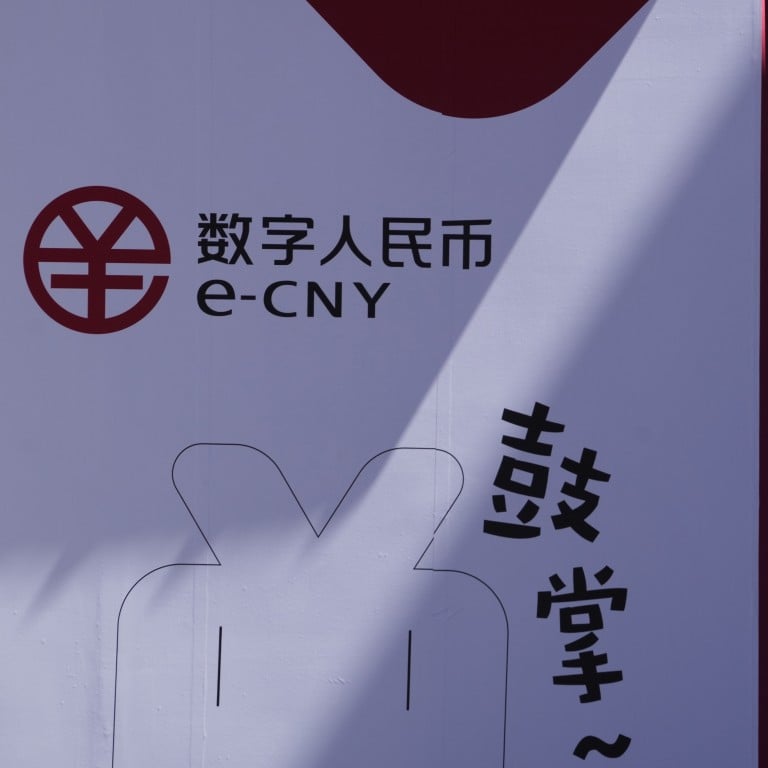
How China’s digital yuan could work in a dual-currency socialist system
- China could split the e-CNY into onshore and offshore versions, have a freely tradeable yuan-pegged stablecoin or participate in a universal CBDC
- If China does decide on universal basic income, digital yuan payments could easily be programmed to be spent only on necessities
But what does this mean under China’s unique dual-currency and socialist system?
CBDCs like the digital yuan function like traditional banknotes but exist entirely in digital form and are registered on a centralised ledger. Their digital nature enables them to be more efficiently distributed and, crucially, programmable – from spending restrictions to triggers and limits.
CBDCs could complement this by ensuring the digital yuan issued under the initiative can only be spent on certain categories such as food, utilities and education, therefore encouraging the working population to remain productive. The government could also programme negative interest rates to boost consumption.
This would give the central bank even greater flexibility in its monetary policies. Yet the premise here is that there has to be absolute trust in the issuer, in this case, the Chinese government, given that it is theoretically possible to directly encode restrictions, even sanctions.
Assuming there are common protocols, CBDCs can be directly settled without the need for a clearing house. This not only bypasses restrictions from third parties at choke points but also means transactions are much faster and cheaper. Sanctions are still possible, but only between countries as opposed to freezing a country out of the global financial system.
Another option is to have a stablecoin pegged to the yuan. Stablecoins are digital currencies designed to maintain a relatively stable price, typically tied to a currency but not sovereign in nature.
They can be backed by cash, cash equivalents or other assets. Unlike CBDCs, stablecoins are issued by private banks or organisations, but they share programmable qualities. For instance, First Digital, a trust and custody company based in Hong Kong, issues the FDUSD, a stablecoin pegged to the US dollar.
Can Singapore’s new crypto plans become a ‘blueprint’ for the banking industry?
If a yuan-backed stablecoin gains traction as a market-driven alternative to an offshore digital yuan, free from state control, it could further accelerate the internationalisation of the yuan.
There is one more possibility: a universal CBDC. This would not be tied to a specific local currency but backed by a basket of currencies, accepted by all participating central banks. Conversion into local currencies would be based on rates determined by central banks or exchanges. China could be bold and fully commit to an universal CBDC as its offshore currency – but it is more likely that it will merely participate.
How Brics can push de-dollarisation – and avert a global dollar disaster
These developments are important as Web3 technologies hold the potential to reshape trade and finance in an increasingly multipolar world. As digital asset regulation and technology evolve in step with global cooperation among like-minded central banks, we could see some interesting new models emerge.
Simon S.H. Chan is the head of technology of the Greater Bay Area and global lead of Emerge at Edelman



